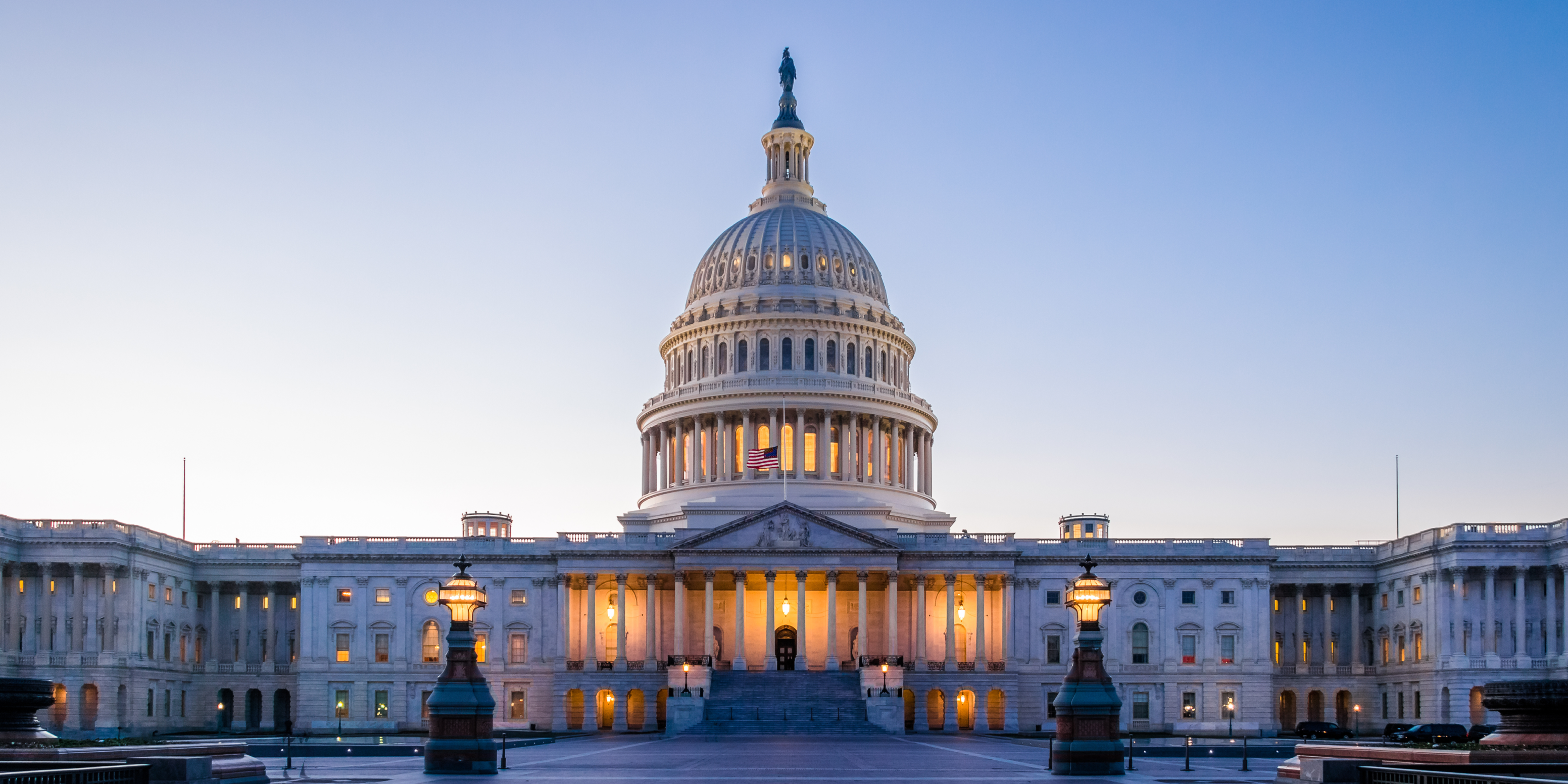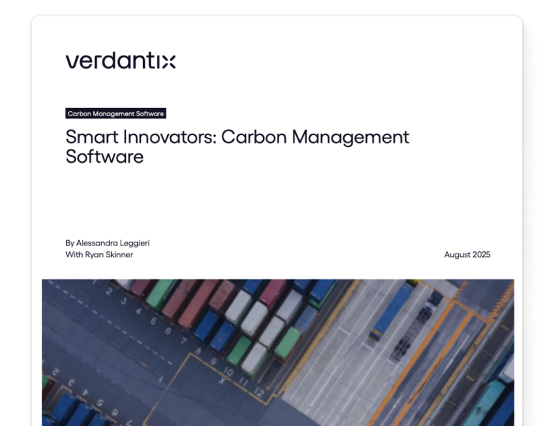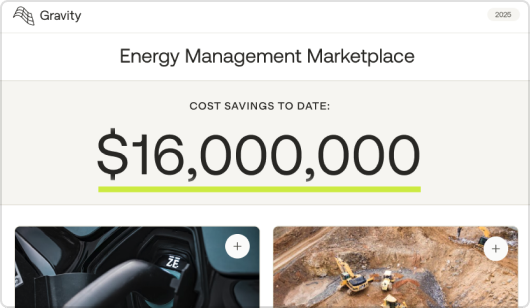See why customers are switching to Gravity
What the New US Tax and Spending Bill Means for Energy Project Timelines
Companies in the US should act now to take advantage of federal incentives for solar and storage projects and fleet electrification before they expire in the coming months.

Earlier this month, President Trump signed a new tax and spending bill – The One Big Beautiful Bill (OBBB) – into law. The OBBB scales back some of the clean energy tax credits and incentives established by the Inflation Reduction Act (IRA), creating major implications for solar, wind, storage, and fleet electrification. Companies will need to act soon to take advantage of these expiring credits. An executive order quickly followed that could further limit federal support for clean energy technology not fully made in the US.
The OBBB also preserves many tax credits established by the IRA, including for Carbon Capture, Utilization, and Storage (CCUS), nuclear, hydrogen, and other clean fuels, with restrictions in some cases. Federal incentives will continue to make these attractive energy management and generation pathways for US companies.
The US Energy Information Administration and some analysts predict that the tax and spending bill will contribute to higher electricity prices. Companies should consider proactively scoping and deploying energy efficiency and onsite generation projects, where attractive, to mitigate the potential increase in operating expenses.
Read on to better understand the implications of this legislation on investing in energy projects. Reach out to Gravity’s Energy Management team at energymanagement@gravityclimate.com to learn more about how your sites could qualify for ROI-positive projects.
What are the changes to clean energy policy in this legislation?
The bill accelerates the phaseout of clean energy generation and investment tax credits for wind and solar projects supported by the IRA.
- Clean energy projects must now be placed in service by the end of 2027 or begin construction within the next 12 months (by mid 2026), instead of by the end of 2033 as previously established, in order to access key tax incentives like the Production Tax Credit (PTC) and the Investment Tax Credit (ITC).
- The Commercial Clean Vehicle Tax Credit for both new and used vehicles will expire on September 30, 2025, instead of December 31, 2032 as previously established by the IRA.
- Projects focusing on battery storage and geothermal operations are set to maintain tax credit eligibility until 2033, before a phased decline over the following years. These technologies must comply with Foreign Entity of Concern (FEOC) regulations starting January 2026.
If implemented, the Administration’s follow-up executive order may also add conditions to remaining clean energy tax credits to favor projects with US-based supply chains.
Alongside these changes, the bill also preserves many of the programs established under the IRA, including tax credits for Carbon Capture, Utilization, and Storage (CCUS), nuclear, hydrogen, and other clean fuels, though the legislation also imposes restrictions on the involvement of foreign entities with these projects.
What does this mean for the economics of energy projects?
These shifts will change the math on certain initiatives relevant for corporate decarbonization and energy efficiency.
- Solar and storage projects: Solar and storage projects, often lucrative investments for businesses when state and federal incentives are included, will face higher CapEx barriers to entry starting in mid 2026. With the Investment Tax Credit (ITC), businesses could deduct 30% of the cost of installing clean energy systems from their federal income taxes. Given solar projects typically require 6-12 months to fully execute from development through construction and that there may be increased competition to introduce these projects before the deadline, companies would benefit from acting soon before restrictions begin in 2026 and 2027.
- Fleet electrification: For many businesses, partial or full fleet electrification can be ROI-positive with these incentives while reducing reliance on changing fuel prices. While EVs may remain an economical choice moving forward, businesses looking to electrify their fleets, from passenger vehicles to Light-Duty and Heavy-Duty trucks, have only months until the September 2025 deadline to earn up to $7,500 per vehicle under 14,000 lbs and $40,000 in credits per vehicle over 14,000 lbs in tax credit.
The elimination of these tax credits and the corresponding increased cost of clean energy is anticipated to constrict energy supply. As energy demand continues to grow, the US Energy Information Administration and many analysts predict that electricity prices are likely to rise. Companies looking to get ahead of this potential increase should continue investing in energy efficiency measures to mitigate rising operating costs.
What are the implications for businesses?
If you have been considering investing in a clean energy project, now is the time to act. Given implementation timelines, companies will need to move quickly to identify the right projects, select and onboard vendors, secure financing, and execute these projects before the tax incentives time out.
If you’re looking to take advantage of these credits before they expire, Gravity can help you identify energy projects that can deliver savings, match you with leading solar and storage developers to implement the projects, and even find the right financing structure. Here are a few ways we’re working with customers now:
- Incentive identification: While there are changes happening at the federal level, many states are still pushing ahead with their own clean energy incentives and requirements for businesses. There is an opportunity to leverage these incentives to enhance investment attractiveness for your business. Gravity can help you identify and leverage all relevant incentives to do so.
- Project identification: Concerned about electricity costs at high-consumption sites? Beyond identifying clean energy investment opportunities, Gravity works with customers to identify energy management opportunities with meaningful cost reduction. From LED lighting retrofits and retrocomissioning to demand response program enrollment and HVAC optimization projects, Gravity finds ways to reduce energy consumption and bills.
- Partner identification: Gravity can match you with trusted partners to deliver these projects on-time. For example, Gravity’s leading fleet electrification partners can assess electrification opportunities and recommend specific vehicle replacements before federal tax credits are no longer available later this year.
Amid changing regulations, there is still time to take action to reduce your energy usage and costs. Reach out to Gravity's Energy Management team at energymanagement@gravityclimate.com to get connected and learn more about how your sites could qualify for ROI-positive projects.
Download the report to learn more
VerdantixTM Smart Innovators: Carbon Management Software

Curious about Gravity's Energy Management Marketplace?
Book a demo to learn more

Curious about Gravity's Europe expansion?
Book a demo to learn more
.png)
Ready to get off the merry-go-round?
Book a demo to learn more.

Curious about Gravity's CDP accreditation?
Book a demo to learn more.

California's Carbon Reporting Rule
Watch our webinar to prepare for California's new climate regulation

Curious about these features?
Book a demo to learn more.

Be prepared for SECR
Meet with our team, walk through the steps you'll need to take to report, and start a free trial to see how Gravity can help you report with greater speed and accuracy.

See the platform in action
Watch a short video to see why leaders like WM, TTI, and WAF have chosen to work with Gravity to simplify carbon accounting and drive business impact.

Meet with our team, walk through the steps you'll need to take to report, and start a free trial to see how Gravity can help you report with greater speed and accuracy.

Cut down reporting time by 70%
Request a demo to see these features in action and learn how they can save hours of manpower in your next reporting cycle.
Looking to Uplevel Your Sustainability Programs in 2025?
Reach out for a personalized meeting with our climate experts to find opportunities to save time on regulatory compliance, simplify internal communications, and execute projects that deliver real business impact.
Find energy efficiency projects that deliver value
Learn how to reduce energy costs and emissions.

Be prepared for the CSRD
Get in touch to find out how your company should prepare for the CSRD amidst changes to the regulation.






%20(1).png)